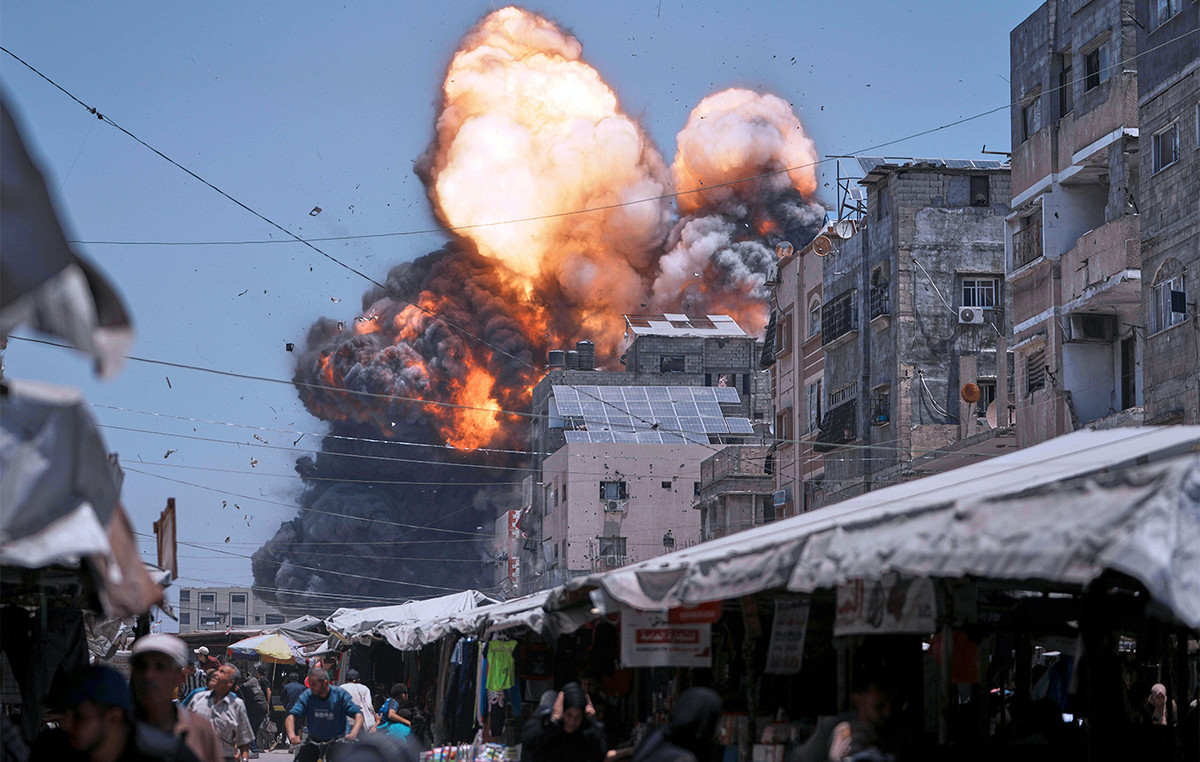It was nearly four long years of destruction and death the likes of which the world had never seen before Soviet Union troops finally conquered Berlin, ending World War II in Europe.
The Union of Soviet Socialist Republics (USSR) was invaded by Nazi Germany on June 22, 1941, and soon after began coordinating its efforts with the Western Allies – led by the United States and the United Kingdom – to contain the German advance and then against -attack.
That same year also marked the United States’ entry into the war, following the Japanese attack on Pearl Harbor on December 7.
Thus, 1941 was the year of entry into the war of the main powers. But for so many other countries, from Germany, which carried out the first aggression, to Poland, France, Norway, the United Kingdom and many others, the war had started in September 1939.
This is a look at the role the Soviet Union played in World War II, including the major battles it took part in and the massive losses it suffered and inflicted on the Germans, a role that is remembered every year by Russia in its parade of the ” Victory Day”.
The first years of the war
When German tanks crossed the border to invade Poland on September 1, 1939, France and the United Kingdom declared war on Germany.
The USSR does not. It had no commitments to Poland and maintained a stable relationship with Nazi Germany, with which it had signed a non-aggression pact (the Ribbentrop-Molotov) just a month earlier. And so, on September 17, Moscow also ordered the invasion of Poland from the east.
Germany and the USSR divided Polish territory after their respective victories—about 22,000 Polish prisoners would be killed years later in Katyn, Russia—and in November the Soviets attacked Finland, starting the Winter War.

During these early years, Moscow conducted its own military campaigns under the shadow of German victories in the west, which led to the fall of Denmark, Luxembourg, Norway, the Netherlands, and France in 1940 to Nazi control.
Operation Barbarossa
But the coordination of interests did not mean that Germany and the USSR were allies.
On June 22, 1941, when dictator Adolf Hitler had already consolidated his control over Western Europe – with the exception of the United Kingdom – Germany launched Operation Barbarossa, the invasion of the Soviet Union.
About three million Germans and their allies participated in the attack on the USSR, commanded by Josef Stalin. The invading troops attacked with three groups of armies, aiming to capture Leningrad, Kiev and Moscow.
They were very confident after their quick successes in Poland and France, and German forces tried to replicate their tactical novelties, such as the combined use of tanks, motorized infantry, and aircraft in major maneuvers – already known by the name of Blitzkrieg at the time.
And while they had initial successes, the tenacity of Soviet defenders, the inevitable scale of distances and fighting, and pressures on logistical lines hampered progress.
Delayed in their objectives and with the harsh Russian winter approaching, German troops and their allies took Kiev and besieged Leningrad, but a powerful Soviet counter-offensive stopped them 80 km from Moscow.
Relationship with Western Allies
The USSR did not fight alone. The United Kingdom had been fighting the Germans since 1940, inflicting its first defeat that year in the Battle of Britain. And in December, nearly six months after Barbarossa, the United States joined the fight.

During Operation Barbarossa and the first years of fighting Germany, the USSR received huge amounts of military equipment, resources and food from the United Kingdom and the United States through the Lend-Lease Act, an American initiative to provide military aid to allies that began even before his entry into the war.
This aid, which included tanks, fighter planes and trucks, as well as food and fuel, was vital to the survival of the USSR in the early years of German success, as former Soviet general and leader Nikita Khruschev recalled in his memoirs.
And in addition to this aid, the United States and the United Kingdom put pressure on Germany from the west through their naval campaigns in the Atlantic, air campaigns over Germany and, finally, land campaigns in Italy – Germany’s ally – and occupied France.
This coordination was conceived in the two summits held by leaders of the United States, United Kingdom and the Soviet Union during the war, held in Tehran (1943) and Yalta (1945).
Counterattack and capture of Berlin
The first major Soviet victory of the war took place at Stalingrad, when in early 1943 the German attack in the south was stopped, contained and destroyed. What was left of the German 6th Army surrendered to the Soviets after suffering around 70,000 deaths in three months of brutal fighting.
The Germans regained the initiative and attacked Kursk again in July 1943, in what is often described as the biggest tank battle in history. And again they were defeated, still with huge losses for the Soviets.
Since then, the USSR counter-offensive has been unstoppable, and the names of generals such as Gyorgy Zhukov, Ivan Konev, Aleksandr Vasilevsky and Konstantin Rokossovsky have gained enormous fame.

The USSR won major victories on all fronts, and after Operation Bagration in 1944, which destroyed the Army Group Center in Germany, its advance into present-day Poland, Ukraine, Hungary and the Baltic countries was steady – and marked by tremendous human losses. on both sides – and put Berlin itself under siege.
Meanwhile, the United States and the United Kingdom were also advancing into Germany after liberating France in 1944. On April 25, 1945, Allied and Soviet forces met on the Elbe River in the heart of Germany as the battle for Berlin continued. .
In that combat emerged one of the most iconic images of the 20th century and a universally recognized symbol of Soviet military might: a group of Red Army soldiers raised the USSR flag on the roof of the Reichstag, the German parliament in Berlin, signaling victory over Germany. Nazi.
The USSR had just conquered the German capital and ended World War II in Europe, in a coordinated effort with its allies.
The cost was terrible: some 7.5 million killed in its military forces, in addition to countless civilians, including 2.5 million Jews living in territories owned or controlled by the USSR and who were killed by the Nazis, according to estimates. of the Yad Vashem World Shoah Commemoration Center.
Last act in the Pacific
The Soviets would still have one more role to play in World War II, albeit a smaller one compared to the titanic task in Europe. In August 1945 they launched the invasion of Manchuria (China) occupied by the Empire of Japan, one of Germany’s main allies and still undefeated.
Soviet troops, who had already fought a conflict with the country in 1939, managed to advance against a weakened Japan, cornered by the United States and the United Kingdom since 1941 and which had just been bombed with the first two atomic bombs. in Hiroshima and Nagasaki.
The Soviet attack, which even advanced into the territory of Korea and the Kuril Islands, also controlled by Japan, constituted another source of pressure for Tokyo, which signed the unconditional surrender on September 2, 1945.
Source: CNN Brasil
I’m James Harper, a highly experienced and accomplished news writer for World Stock Market. I have been writing in the Politics section of the website for over five years, providing readers with up-to-date and insightful information about current events in politics. My work is widely read and respected by many industry professionals as well as laymen.







